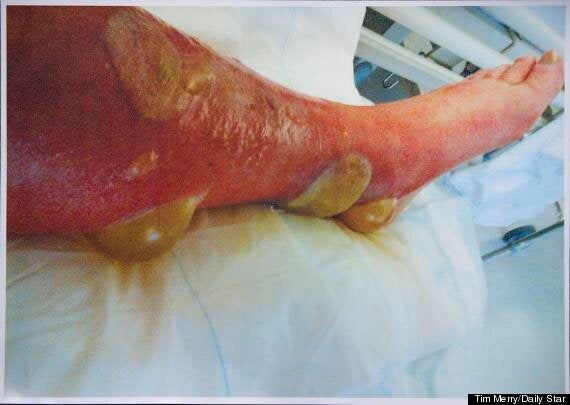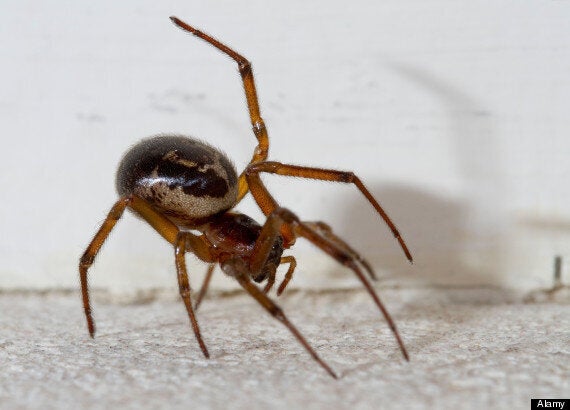SEE ALSO:
A grandfather has revealed how a bite from a false widow spider left him in so much pain he “just wanted to die”.
John Catlin was bitten by one of the venomous arachnids in his garden in Bromley, last year.
Within hours, the 66-year-old’s temperature was topping 40C and he was rushed to hospital.
WARNING: Graphic pictures below

John Catlin was bitten on the toe by a false widow spider in his garden in Bromley
The pensioner told the Daily Star: “Over the two weeks I stayed in hospital, I was all swollen up and my leg turned dark red with huge blisters. At one point my organs started shutting down and I had real problems with my kidneys."
Catlin was told he had a streptococcal infection in the bite and was diagnosed with cellulitis, a severe skin infection.
He added: “One night my heart was racing like a marathon runner and I needed injections from doctors.
“I thought: ‘I just want to die.’ I was later told I came very close to losing my foot."

Catlin developed an streptococcal infection in the bite and was diagnosed with cellulitis
Catlin revealed his experience after Essex decorator Ricki Whitmore told of how he nearly lost a leg after a bite from a false widow spider as he worked at a school.
The 39-year-old must have his wounds cleaned daily by a nurse and six months of physiotherapy are on the cards before he is expected to walk again.
The spiders - Steodata nobilis - are related to the black widow, but do not have the distinctive red spot on their backs. They make similar "tangle" webs, which are full of eggs, making it likely for many spiders to be in the same small area.

Six species of false widow spider have been recorded in the UK
Unlike the black widow, the false widow spider is known to live in Britain and was first spotted in Devon in the late 1800s.
It tends to populate the coastal areas of southern England and London and it is likely the increase in its numbers is in response to climate change.
According to Stuart Hine of the Natural History Museum's (NHM) Insect Information Service, no one has ever died of a spider bite in Britain and the number of reported bites from spiders in general is minimal.
TODAY'S TOP STORIES
The false widow is amongst only a dozen or so of the UK's 650 species of spider that are capable of biting humans.
The NHM says reports from people believed to have been bitten by the false widow describe varying levels of burning, discomfort or numbness and associated swelling in the area surrounding the bite.
Symptoms usually disappear within one to three days, though some like Catlin and Whitmore have experienced severe reactions to the arachnid's venom.